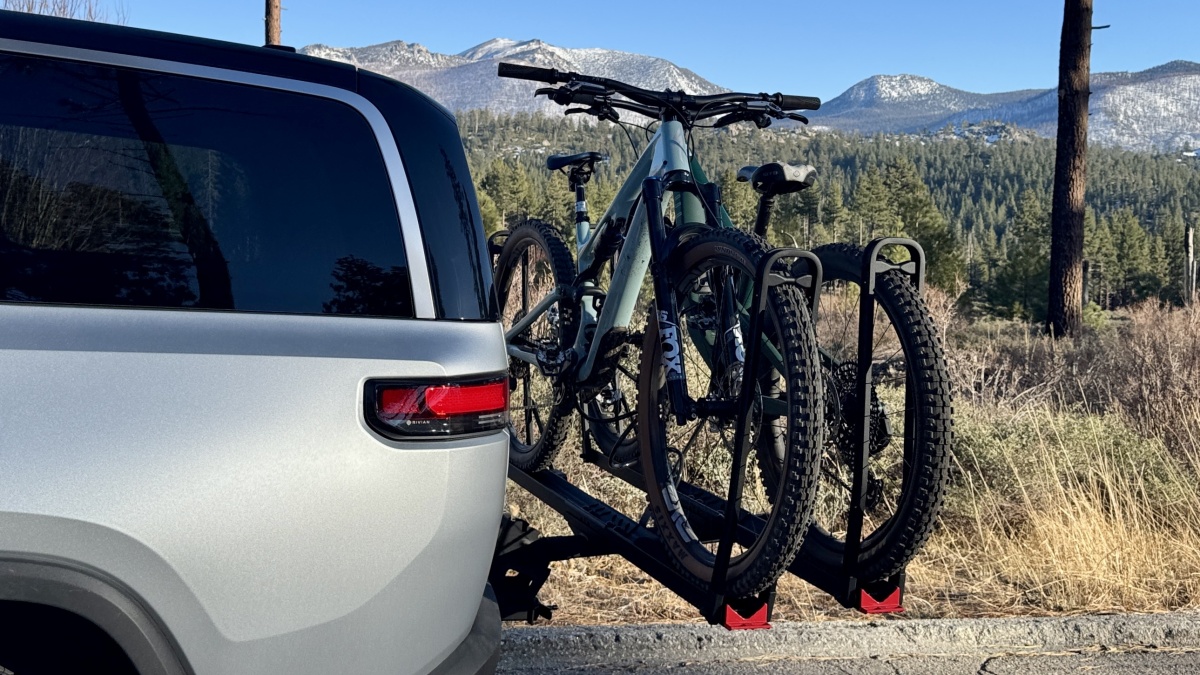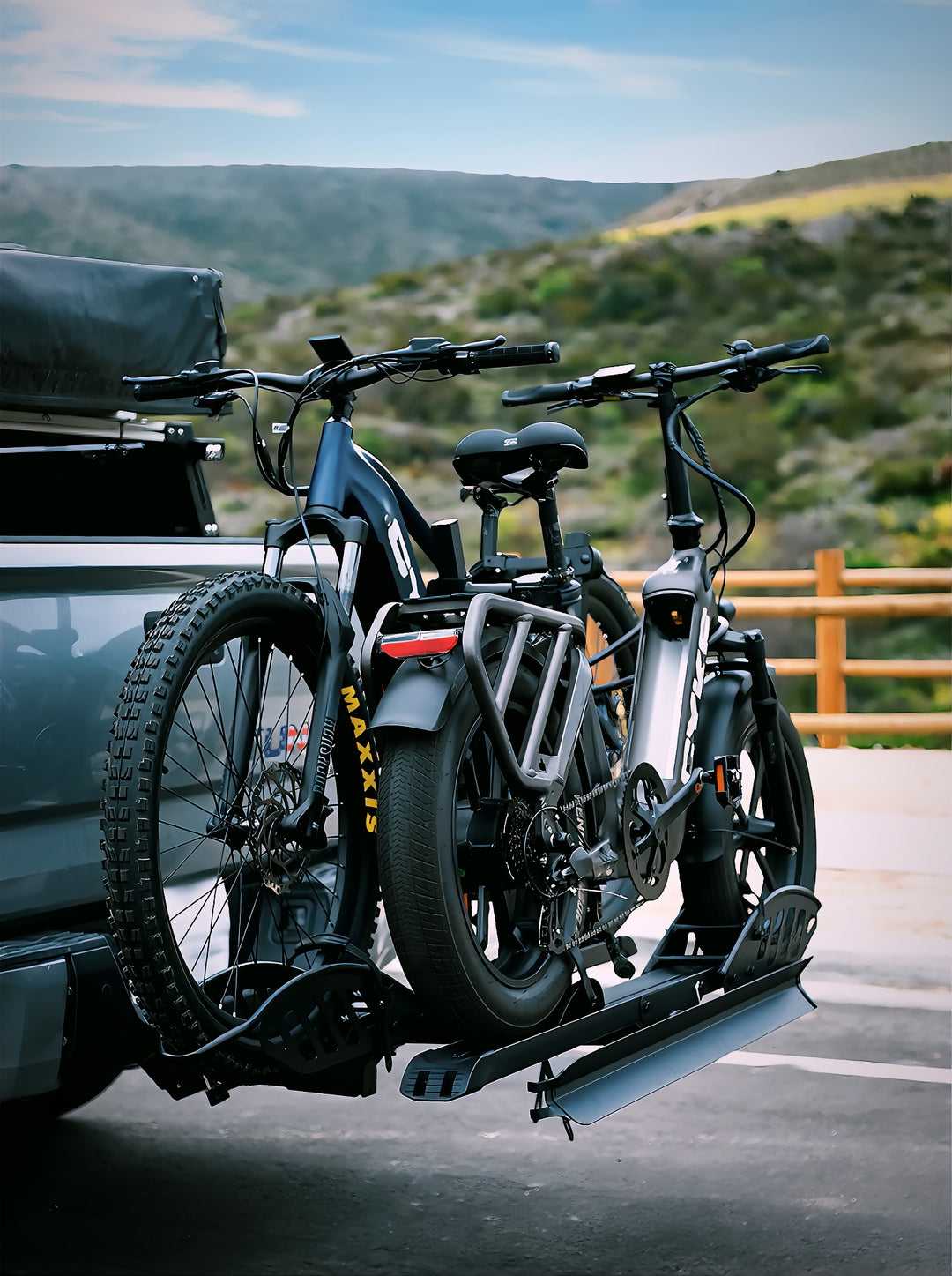How an E Bike Rack Handles Increased Weight Reliably
Wiki Article
Discover the Different Kinds Of Bike Rack and Their Practical Applications for Cycling Lovers
The variety of bike Racks readily available today caters to the varied requirements of biking fanatics. From freestanding to wall-mounted choices, each layout offers special advantages for storage and transport. Portable Racks also give adaptability for those on the move. However, selecting the optimal kind requires mindful consideration of details requirements. Comprehending these aspects can make a substantial distinction in both ease and safety for bikers. What are the vital considerations when choosing a bike shelf?Understanding Bike Shelf Types
Various types of bike Racks accommodate the diverse demands of bikers. Amongst the most common are freestanding racks, frequently found in city locations, which enable several bikes to be safeguarded in a portable area. Wall-mounted Racks offer those with restricted floor space, offering an effective remedy for home storage. Additionally, portable bike shelfs, made for ease of transport, interest cyclists that often travel.
Hitch-Mounted Bike Racks
Hitch-mounted bike Racks offer a useful option for moving bikes, but understanding their setup procedure is necessary for efficient use. Customers have to additionally take into consideration the weight ability of these Racks to guarantee safety and security and security while taking a trip. Additionally, compatibility with different vehicle kinds plays a substantial duty in determining the right shelf for specific needs.Setup Refine Overview
When selecting a hitch-mounted bike shelf, understanding the installment procedure is essential for assuring safety and security and ease. The individual has to validate compatibility between the car and the shelf's drawback receiver. Many Racks are developed for either 1.25-inch or 2-inch receivers. After choosing the appropriate shelf, the installation begins with protecting the shelf into the hitch receiver and tightening up the hitch pin or bolt to stop motion. Appropriate alignment is vital to determine the shelf does not obstruct tail lights or license plates. Once mounted, it is recommended to look for stability by using mild stress to the shelf. Following the producer's guidelines will certainly ensure an effective installment, advertising a secure biking experience on the road.Weight Capability Considerations

Compatibility With Vehicle Types
Picking the appropriate bike rack includes confirming compatibility with numerous vehicle types. Hitch-mounted bike Racks are designed to affix to the back hitch receiver of a vehicle, making them suitable for a wide variety of automobiles, trucks, and suvs. However, it is necessary to examine the hitch course and weight capacity to confirm a correct fit. The majority of hitch-mounted Racks work with 1.25-inch and 2-inch receivers, accommodating automobiles geared up with suitable towing abilities. Additionally, individuals ought to consider their automobile's height and layout, as some Racks might block back accessibility or need additional clearance. Eventually, comprehending lorry specifications confirms that cycling enthusiasts can firmly deliver their bikes without endangering safety or capability.Trunk-Mounted Bike Racks
Trunk-mounted bike Racks supply a practical option for bikers looking for an effective way to carry their bikes. Recognizing the installment procedure is essential for ideal use, as inappropriate setup can result in safety and security problems. Additionally, thinking about the weight ability of these Racks guarantees that they can firmly hold the bikes without danger of damage or failing throughout transportation.Setup Refine Overview
Many cycling fanatics value the ease of trunk-mounted bike Racks for their ease of use and adaptability. The installment procedure usually starts with unboxing the rack and acquainting oneself with its components. Many Racks include flexible straps and hooks made to secure them to the automobile's trunk or hatch. Individuals ought to confirm the rack is located properly, aligning it with the car's contours for security. Adhering to the manufacturer's instructions, the straps are after that tightened firmly, assuring a tight fit. It is very important to inspect that the rack does not block the vehicle's lights or certificate plate. Validating that all links are secure prior to filling bikes is important for risk-free transportation. Appropriate setup boosts both security and efficiency throughout biking journeys.Weight Capacity Considerations
When considering a bike rack for carrying bikes, weight capacity is a crucial factor that can not be neglected. Trunk-mounted bike Racks usually have weight limitations that differ depending on the version and design. It is vital for individuals to examine these requirements to assure they do not go beyond the suggested weight, as doing so can compromise both security and car stability. Most trunk-mounted Racks can sustain 1 or 2 bikes, with a mixed weight ability ranging from 70 to 120 extra pounds. Cyclists need to likewise consider the weight of their bikes, especially if they have larger versions like electric bikes. Effectively matching the rack's weight capability with the bikes' weights ensures a secure and safe transportation experience.Roof-Mounted Bike Racks
Roof-mounted bike Racks supply a streamlined remedy for delivering bicycles, providing cyclists with the advantage of making the most of cargo area. These Racks are created to hold bikes securely atop the lorry, permitting easy accessibility to the back of the cars and truck and preventing blockages to the certificate plate or tail lights. They are excellent for people who often take a trip with their bikes, as they can fit numerous bicycle styles and sizes.Installation typically entails attaching the shelf to the car's bars, guaranteeing a secure and safe fit. Roof-mounted Racks are light-weight and frequently wind resistant, which can result in improved fuel performance compared to various other kinds of racks. However, individuals must think about the height of their lorry when packing and unloading bikes, as well as prospective challenges when entering garages or low-clearance locations. Overall, roof-mounted bike Racks provide a versatile and effective option for devoted bikers on the go
Wall-Mounted Bike Racks
Wall-mounted bike Racks provide an effective solution for bicyclists seeking to make the most of limited space while securely saving their bicycles. These Racks are optimal for urban residents or those with tiny garages, as they elevate bikes off the ground and utilize vertical space. Made from sturdy materials, wall-mounted alternatives can suit different bike kinds, consisting of crossbreed, road, and hill bicycles.Setup is uncomplicated, allowing customers to place them in garages, basements, and even exterior areas. Lots of layouts enable one or multiple bikes, making them flexible for specific or family use. Furthermore, some wall-mounted Racks included incorporated locks or security features to deter burglary, enhancing assurance for cyclists.
Portable Bike Racks
Portable bike Racks provide bicyclists a adaptable and practical option for delivering their bikes. These Racks are developed for easy installment and elimination, making them optimal for those who require to regularly change in between locations or vehicles. Portable and commonly lightweight, portable bike Racks can be quickly kept in a trunk or garage, reducing the concern of irreversible setups.There are numerous kinds of portable bike racks, including hitch-mounted, trunk-mounted, and roof-mounted options, each catering to various lorry types and cyclist choices. Hitch-mounted Racks supply stability and availability, while trunk-mounted Racks are often a lot more flexible and economical. Roof-mounted Racks are terrific for making the most of freight room however may call for some lifting.
Choosing the Right Bike Shelf for Your Needs
Just how can one identify the very best bike rack to match their particular cycling requirements? Recognizing the best bike shelf includes evaluating a number of variables. One have to take into consideration the type of lorry used for transportation, as Racks are developed for different installing systems, such as hitch, roofing system, or trunk. Next, the variety of bikes to be brought is vital; some Racks suit just one, while others can hold several bikes successfully. Additionally, figuring out the weight and structure design of the bikes is substantial, as specific Racks are much better suited for heavier or distinctly shaped bicycles. Designated usage must be taken right into account; constant vacationers might choose a much more portable choice, while occasional individuals might focus on simplicity and simplicity of setup. By carefully evaluating these factors to consider, people can choose a bike shelf that satisfies their needs and boosts their biking experience.
Frequently Asked Questions
Can Bike Racks Accommodate Different Bike Sizes and Styles?
Bike Racks vary in layout, allowing lodging for various bike dimensions and styles. Some Racks include flexible elements, while others are specifically customized for certain bikes, making certain safe and secure storage space and easy availability no matter the bike's requirements.Exactly how Do I Properly Safeguard My Bike on a Rack?
To properly protect a bike on a rack, one should assure the framework and wheels are tightly secured utilizing locks or straps, checking for stability and stopping motion during transport to Bike Rack stay clear of damages.Are Bike Racks Easy to Get Rid Of and mount?
Bike Racks differ in setup complexity, but several are made for user-friendliness. Removable designs normally use simple arrangement and elimination, while long-term setups may call for tools and more time, depending upon the particular layout.
What Products Are Bike Racks Commonly Made From?
Bike Racks are normally made from products such as steel, plastic, and aluminum. E Bike Rack. Steel offers toughness and toughness, while aluminum supplies light-weight portability. Plastic alternatives are commonly designed for ease of usage and costDo Bike Racks Affect Gas Effectiveness When Driving?
The concern of whether bike Racks impact gas efficiency when driving is considerable. Research studies show that bike Racks can increase aerodynamic drag, potentially bring about lowered gas performance, specifically at greater rates or with additional weight.After selecting the ideal rack, the installment begins with securing the shelf into the drawback receiver and tightening the drawback pin or bolt to avoid motion. Roof-mounted Racks are frequently aerodynamic and light-weight, which can lead to improved fuel efficiency compared to various other kinds of shelfs. Hitch-mounted Racks provide security and ease of access, while trunk-mounted Racks are typically much more budget-friendly and flexible. Next, the number of bikes to be brought is necessary; some Racks accommodate just one, while others can hold several bikes efficiently. Bike Racks differ in layout, enabling accommodation for various bike sizes and designs.
Report this wiki page